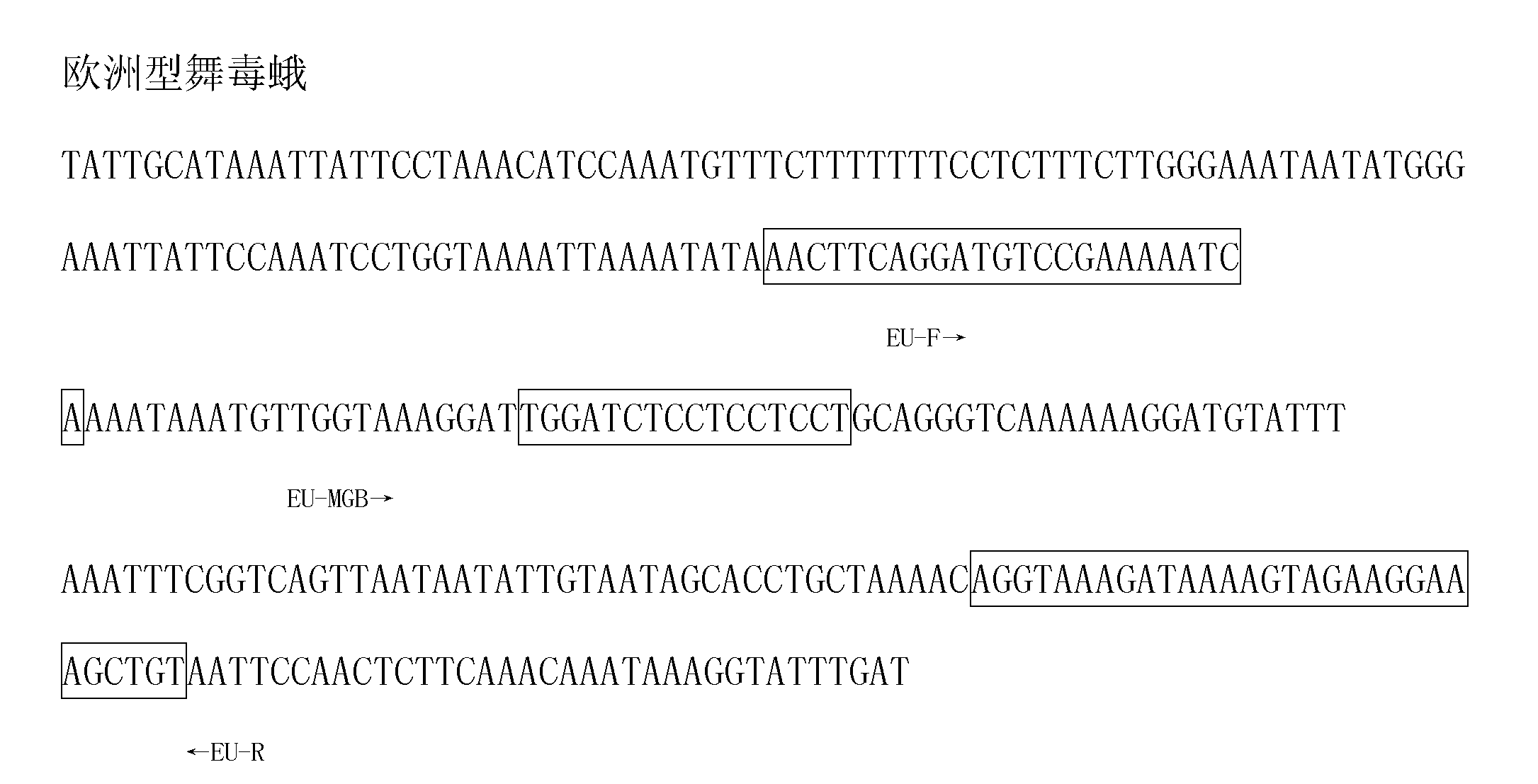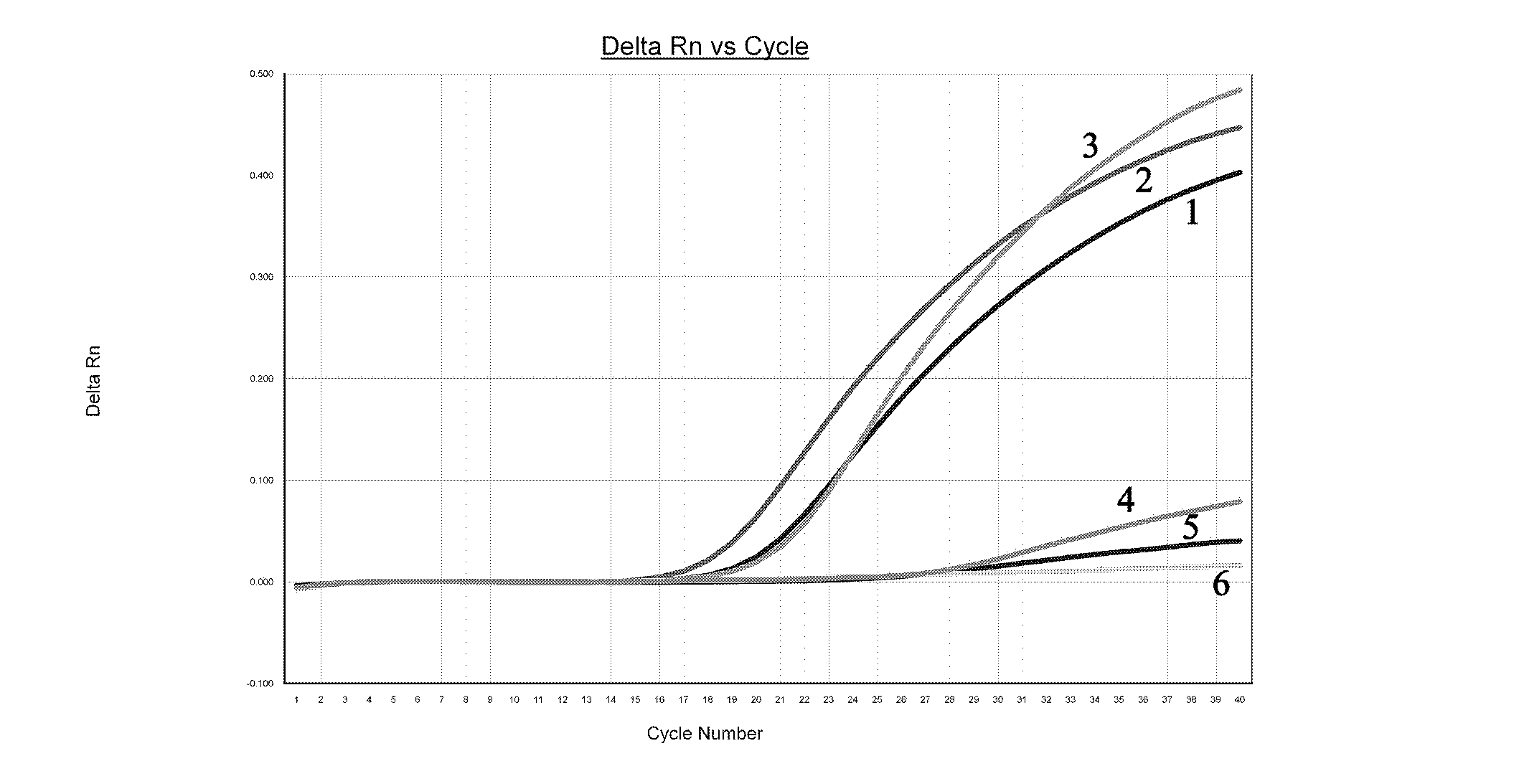Real-time fluorescent polymerase chain reaction (PCR) detection method for European Lymantria dispar, and primers and probe for detection
A real-time fluorescence and detection method technology, applied in the detection of European gypsy moth, real-time fluorescent PCR detection of European gypsy moth, primers and probes for detection of European gypsy moth, can solve the failure of action, can not be completely eradicated, etc. problem, to achieve the effect of shortening the detection time
- Summary
- Abstract
- Description
- Claims
- Application Information
AI Technical Summary
Problems solved by technology
Method used
Image
Examples
Embodiment 1
[0033] 1. Design Primers and Probes
[0034] Design the following specific primers EU-F / R and probe EU-MGB according to the sequence of some genes in the mtDNA (mitochondrial DNA) of these several geographical populations of Gypsy moth (primers and probes are synthesized by Shanghai Jikang Company):
[0035] European gypsy moth primers:
[0036] Upstream primer EU-F: 5'-AACTTCAGGATGTCCGAAAAATCA-3' (SEQ ID NO.1);
[0037] Downstream primer EU-R: 5'-ACAGCTTTCCTTCTACTTTTTATCTTTACCT-3' (SEQ ID NO.2);
[0038] European gypsy moth probe EU-MGB: FTGGATCTCCCTCCTCCTP (SEQ ID NO. 3) or its complementary chain.
[0039] The detection principle of the above primers and probes is as follows: figure 1 As shown, the alignment of the probe positions of the three different types of gypsy moth sequences is shown in figure 2 .
[0040] 2. Extraction of Gypsy Moth DNA
[0041] Take the single-headed gypsy moth sample (see Table 1 for the source of the sample) and put it into a mortar, add ...
PUM
 Login to View More
Login to View More Abstract
Description
Claims
Application Information
 Login to View More
Login to View More - R&D
- Intellectual Property
- Life Sciences
- Materials
- Tech Scout
- Unparalleled Data Quality
- Higher Quality Content
- 60% Fewer Hallucinations
Browse by: Latest US Patents, China's latest patents, Technical Efficacy Thesaurus, Application Domain, Technology Topic, Popular Technical Reports.
© 2025 PatSnap. All rights reserved.Legal|Privacy policy|Modern Slavery Act Transparency Statement|Sitemap|About US| Contact US: help@patsnap.com



